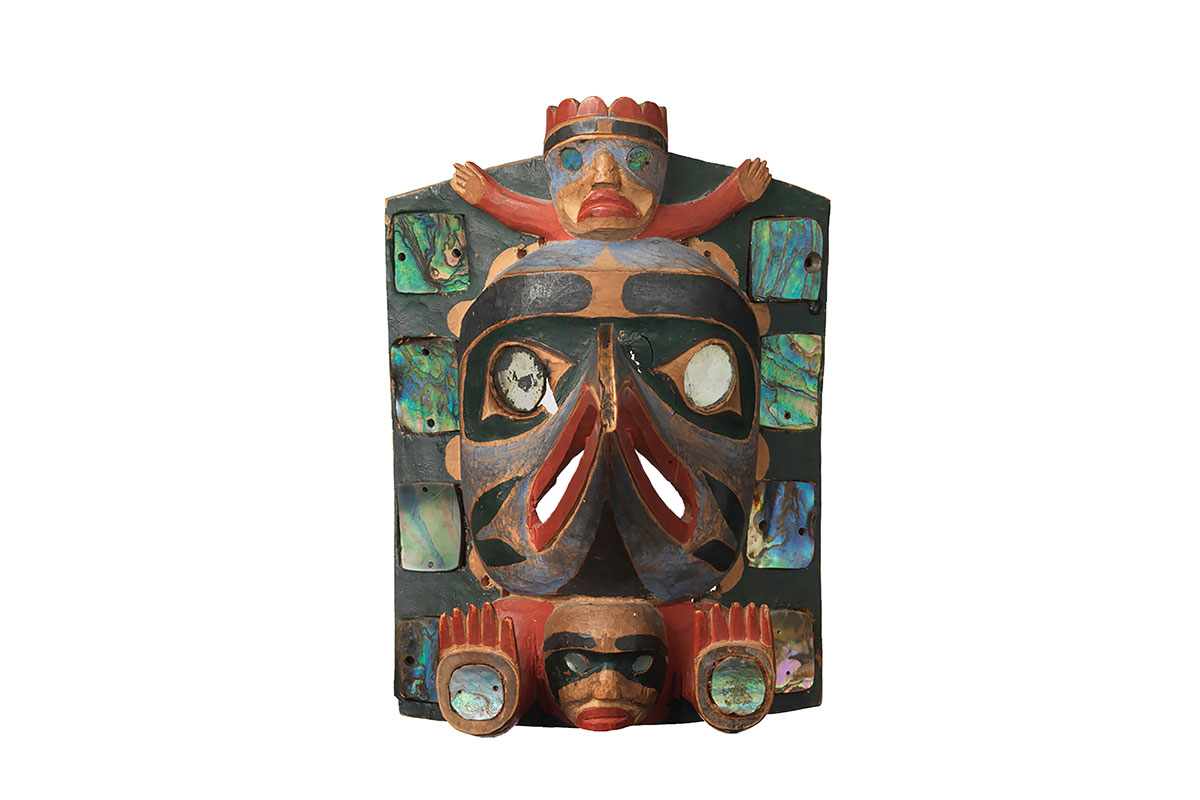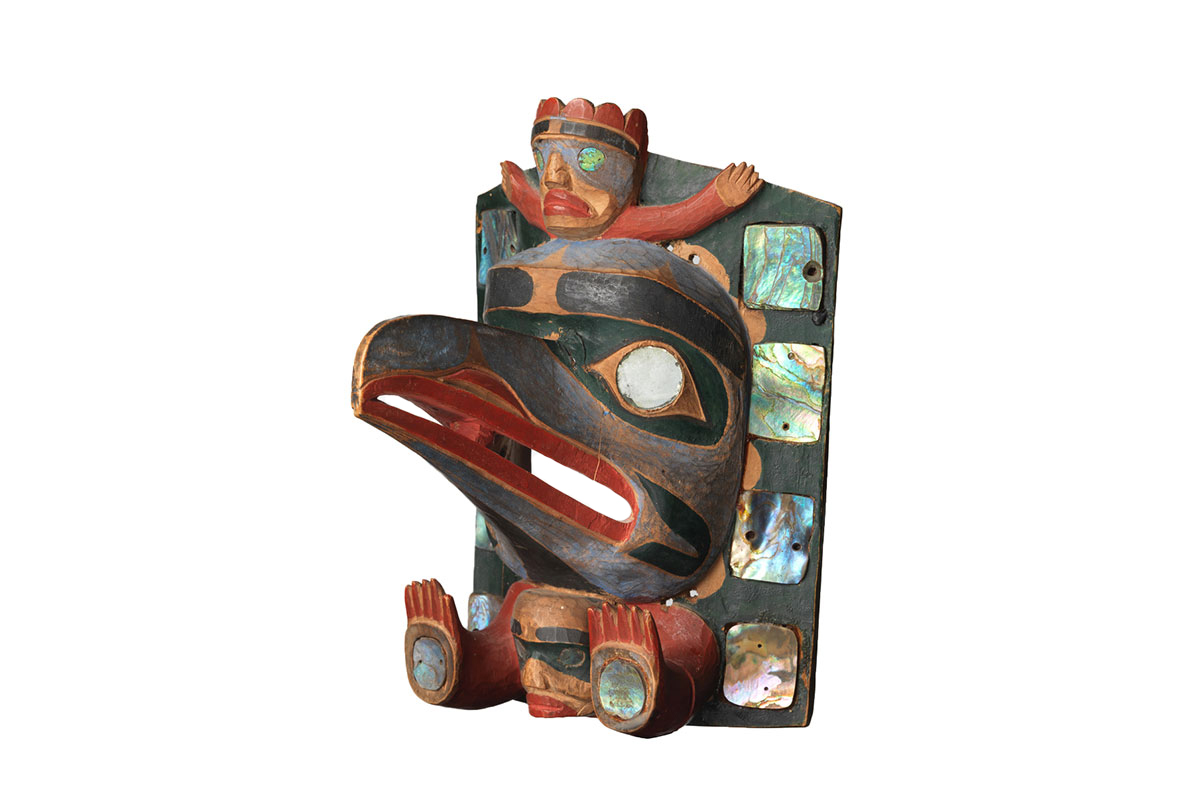Headdress Frontlet
Central Coast, British Columbia
ca. 1870
wood, paint, abalone shell, metal mirror
height: 8 ¾"
Inventory # N4355
Please contact the gallery for more information.
Headdresses frontlets were the principal form of ceremonial headgear on the Northwest Coast in the nineteenth century. The Nuxalk, a First Nations group from the Bella Coola Valley, British Columbia, were particularly renowned for their skillful carvers. Nuxalk frontlets were worn by prominent members of a clan or family and were part of an elaborate headdress which typically included sea lion whiskers, animal fur, and often ermine tails.
The frontlet seen here is a particularly fine example of this powerful tradition. The main image is a bird with re-curved beak, possibly the clan crest of the person or family for whom it was carved. Two humanoid figures, one of which is crowned, emerge from above and below the avian face. The crowned figure, its arms raised as if captured mid speech, is perhaps a portrait of a chief or community leader. In a powerful gesture, the human figure at the lower edge of the frontlet projects its hands outwards, and may represent a relevant life-force. In addition to rich painting in red, blue and black, the wealth of inlay would have reflected firelight animating the headdress frontlet when worn. The eight rectangular pieces of abalone shell frame the overall composition, while the addition of smaller fragments lends prominence to the humanoid figures’ eyes, and in the lower figure, the palms of the hands. The bird’s irises are comprised of two round mirrors, a material deemed particularly significant by numerous First Nation peoples. The exquisite carving, rich painting and precious materials indicate the high status of the frontlet’s original owner and speak of its importance during notable social occasions.



